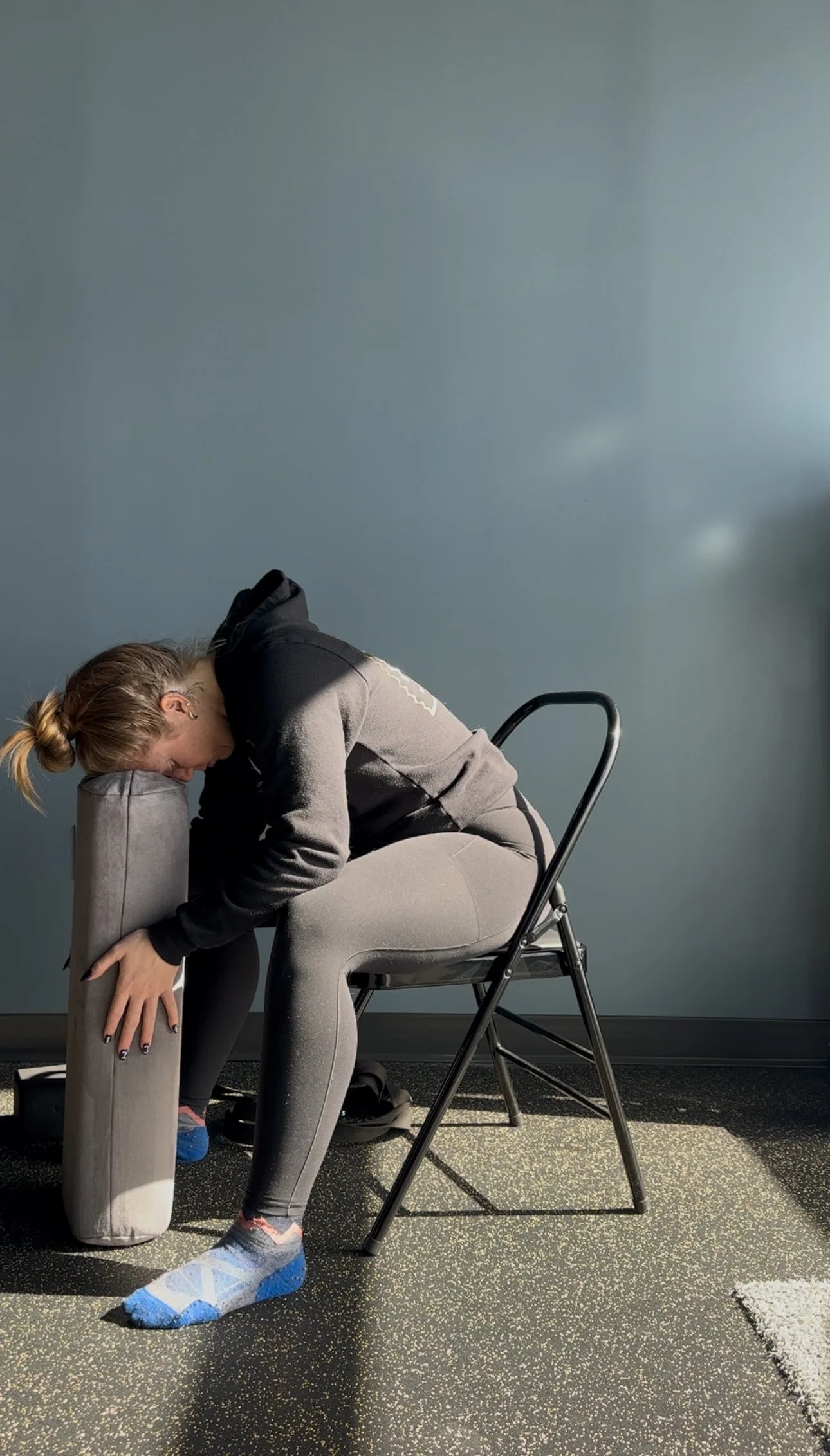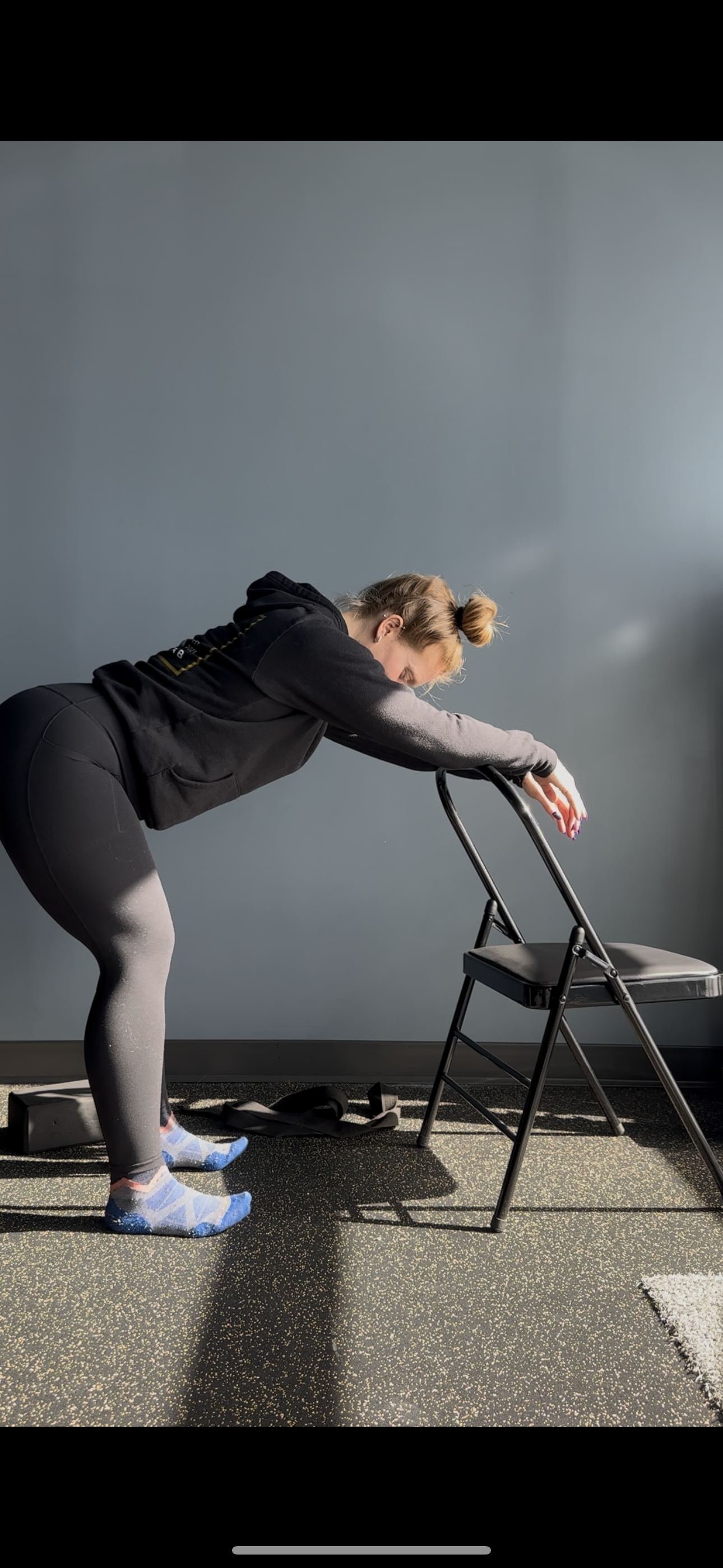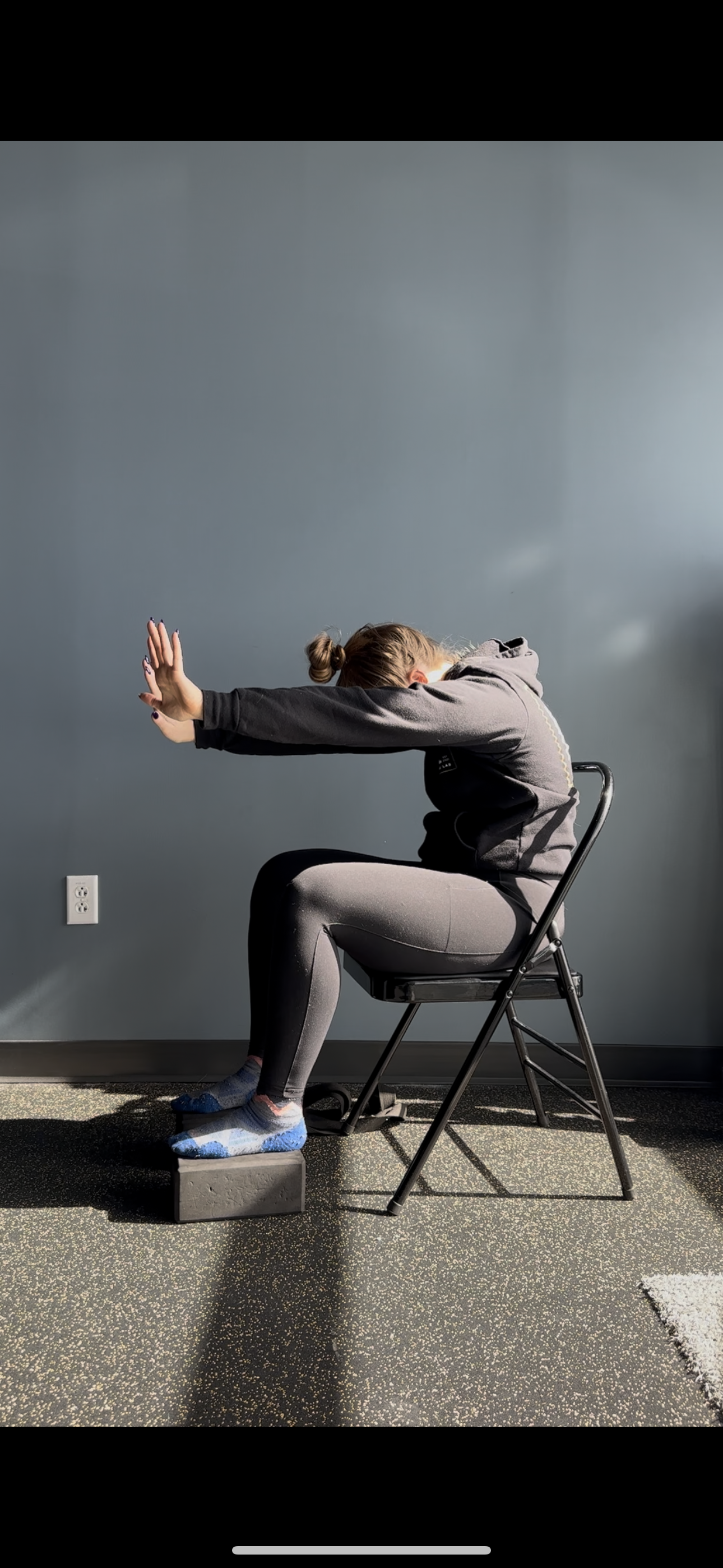A few reasons why everyone and anyone can/could/should practice chair yoga!
Setting the record straight: chair yoga is for everyone!
Chair yoga a practice that allows all levels and abilities of yoga practitioners to enjoy the benefits of yoga.
Imagine people practicing movement and meditation (what the West deems yoga) on park benches, in wheelchairs, in folded chairs in a gym, in a hospital recovery room, in a home for folks with disabilities, in a wellness space with chairs.
Yoga is much more than a simple mat practice, and that’s truly just the beginning. I wrote this post to help inspire our yoga beyond the mat and into the chair, couch, bed, or against the wall — whatever you got and wherever you can find support. Settling the mind is challenging in pretty much any capacity these days. The more we practice, the more we can learn how to channel this same energy into the outcomes that matter.
I’ve come up with a few reasons why this style of yoga might be not only more accessible, but an overall more fitting yoga lineage to practice for most people — or perhaps a more approachable class than the common vinyasa mat yoga we find ubiquitously throughout wellness, fitness and movement spaces.
From my time spent learning ways to make yoga more accessible for people, I discovered Jivana Heyman’s podcast, book and website dedicated to Accessible Yoga. From taking his online classes, to his books, and enjoying his podcast and workshops, I share in the dreamy vision that one day I hope to look around the various yoga spaces I am in and see true integration of folks of all levels and abilities together enjoying the beautiful benefits, feelings, and efforts of yoga.
If you’ve never taken a chair yoga class and are curious to try — here is a chair yoga class with Jivana on YouTube! Hopefully after you finish reading this, you treat yourself with this lovely class and experience how grounding and nourishing this practice is.
4 reasons to practice chair yoga
Changing levels in the body (up, down, folding, standing, sweeping, kneeling, lunging…etc) is not what the body needs.
The quick transitions from lying down to sitting up, child’s pose to a forward fold, or down dog to standing, can be dizzying or exhausting. It’s really common for leveled transitions like these to spark nausea, heartburn, anxiety, vertigo, lightheadedness and fatigue.
In chair yoga, poses tend to be practiced in a group rather than a flowing up/down/all around sequences. Pose variations progress slowly. For example, seated postures, balancing or twists are practiced together with mindful progressions. Changing the body’s orientation in space so frequently and quickly, like in a vinyasa class for example, can be unnecessarily challenging and fatiguing.
Self inquire prior to practice:
Would a mat practice drain my energy?
Do I need to release pent up energy or conserve and manage the energy I have today?
Is is better to still the mind and connect to breath from a supported seat today?
Practice intention is for breath control, meditation and befriending the mind.
Chair yoga challenges the western-performative-fitness centric gaze that yoga should be dynamic, acrobatic and physically challenging. Chair yoga embraces the true roots of yoga as a process to spiritual awakening by bringing sacred attention within to focus on finding our heart’s center, creating intentional choice, and realizing the whole universe we belong to. Pranyama, meditation and visualizations are examples of yogic tools that teach our minds to understand our true essence and karmic purpose. The benefits of a pranayama and meditation practice are cornerstone to our journey as devoted yoga practitioners and spirtual seekers. No matter where you are or what you look like, you can inhale, exhale and focus. In any chair, bed, and space you can tap into the magic of breath and the power of your mind.
These beautiful practices usually begin and/or complete a chair yoga class. Many folks consider these practices the most advanced version of yoga.
Self-inquire prior to practice:
What style of effort and discipline serves my entire being best today?
Is a meditation and pranyama practice a more suitable use of my time and energy?
Are my intentions for practice aligned more with stillness or with movement?Looking for a movement class that flows at a slower, more gentle pace. It’s giving: less is more.
Some days we are in the mood for mellow, slow, and sweet. Chair yoga is calming, centering, grounding, and subtle. There will be days (probably more than we care to admit) when what we really need is intentional rest and relaxation, not to overexert ourself. If we have a regular movement routine or we manage households and careers, our bodies and minds are over worked and tremendously stimulated. Chair yoga is an opportunity to practice slowing down our racing thoughts and send loving kindness into the body to gain clarity, presence, and awareness. It’s also a way to reenergize your body and mind in the middle of the work day or to help you transition from work to home.
Self-inquire prior to practice:
What type of asana and what pace of movement will meet me where I am today energetically?
What are the goals of my movement practice today? Build strength? Or create a sense of calm?
How often do you practice the more subtle elements of the yoga practice?Desire to have a yoga date with a parent, grandparent or a friend who is new to yoga!
Chair yoga is a great option for beginner yoga practitioners and for adults learning about stretching and mobility, in recovery from an injury, or who cannot physically sit on the ground. Most yoga asana classes out there actually require an above average level of coordination, balance, strength, range of motion, and focus. The amount of time we spend sitting and/or looking at screens and depending on our comfy furniture has had a severely negative impact on the general population’s ability to move well.
Self-inquire prior to practice:
Is chair yoga a more approachable practice for someone you love?
Why do you practice mat yoga asana?
Are you open to try chair yoga?
It’s more common that people don’t practice yoga. If you love yoga and want to share the true life changing benefits of this practice with friends and loves ones, especially those whom a mat yoga class feels inaccessible, consider bringing them to chair yoga!
I wrote this to inspire the movement lovers community to consider teaching, practicing or encouraging more chair yoga throughout our wellness, fitness and movement spaces!
In March 2024, I began offering chair yoga at The Form Lab and I can’t wait to see where this journey takes me.




